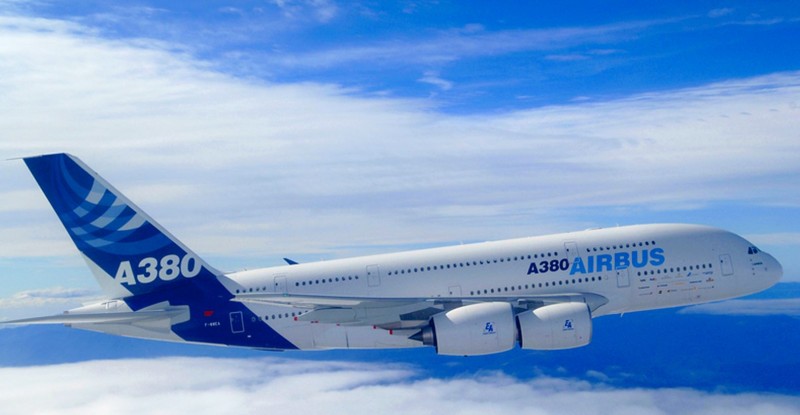EASA has not ruled out the possibility of issuing an airworthiness directive (AD) to address the potential for micro cracks to form on Airbus A380 doors.
The agency “is currently evaluating the safety case before deciding for the appropriate way forward”, EASA safety information and communications officer Dominique Fouda told Runway Girl Network in answer to a specific question about when an AD might be issued.
“At this stage, the root cause is identified and understood for the A380 door noise issue. Airbus has defined a final fix and is developing modifications when necessary to solve the issue,” says Fouda.
He stresses that there is “a strict inspection regime in place”, as described in an All Operators Telex (AOT) published in January by Airbus. This regime is designed “to identify potential cracks and remedial actions which protects the safety of the A380. The A380 is safe to fly.”
Runway Girl Network yesterday reported that A380 operators are bracing for the door fix. The pending modification was described by an A380 operator as even “more serious” than the cracks previously discovered in the wing fittings within the jumbo jet’s wings.
Though an Airbus spokesman provided comment about the issue yesterday – saying the airframer is defining the roll-out of its retrofit solution in the near future to minimize inconvenience for operators, and assuring that the A380 is safe to fly – company executive VP programs Tom Williams gave a far more detailed response during Airbus’ ‘Innovation Days’ held earlier this month in Toulouse.
Asked by a journalist how serious is the door issue, and how much it will cost to fix, Williams said: “Probably most of you are aware we had a particular incident, which was Baku, where we had the diversion of the Singapore aircraft.” In that incident, the A380 had to make an emergency landing due to loss of cabin pressure. Passengers on board the Singapore flight reported there was a lot of noise from one of the A380’s doors, as reported by various news agencies, including the Aviation Herald, which also posted pictures of what it said was the damaged door.
However, prior to the Singapore incident, said Williams, Airbus had fielded “complaints from customers about noise on A380 doors, and that was mainly coming from [a] seal issue. And so, we also at the same time, were doing work on a fatigue model, and the fatigue model that we were running up in Dresden [Germany] has actually come to the end of the fatigue test exercise, which is about three times the design service code…of 19,000 cycles on the A380. So we came with some experience from that. We found some issues of fatigue earlier than we had anticipated, still inside the goals, but still not want we wanted to see, and we were concerned about particularly the cover plate, and that’s the strip of metal that goes across the top of the door, and I guess that’s probably what you’re aware of from Baku, where we saw that that piece of metal went into a resonance, which is a high frequency aerodynamic resonance. And that resulted in a tearing back of a piece of the door. As a result of that we’ve looked again at all of the door design, and in combination of what we learned out of the fatigue sample, we’ve recognized there are some areas which, although they are not a safety issue, they will be an issue longer term so aircraft are fine to fly today.”
Williams said the Airbus AOT “told the airlines that if they had a particular noise problem that there is an ultra sonic test they had to do just to check if there was any issues of cracks or any other fatigue issues. We did find a relatively small number of doors that had that issue; those doors are, again, safe to fly on for a certain period of time.” Furthermore, he said Airbus “won’t be replacing doors” but will be applying “local reinforcements to overcome issues such as the door cover plate”. This is a program that Airbus will “agree with airlines, and we’ll do that on a progressive basis” probably during C checks.
The Airbus executive added, “We’ll check all the doors. Less than 10% of the doors checked have had problems so it’s a relatively small number.”
However, certain other industry stakeholders describe the issue in more serious tones. One A380 operator said it believes every A380 in its fleet will need to have doors modified or replaced.
I asked EASA’s Fouda if it is the agency’s understanding that only a percentage of doors have shown to have problems. He responded, “As said [previously] we are still evaluating the safety case.”
The Airbus spokesman declined to comment on whether it believes an AD is forthcoming. He suggested that such talk was “pure speculation” at this time.
See Airbus’ Williams address the issue of A380 door cracks in the AirInsight video below (beginning at minute 17:49).










